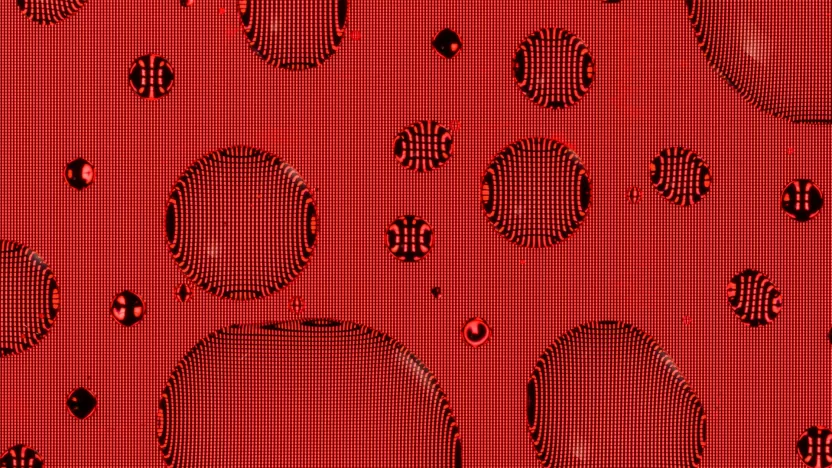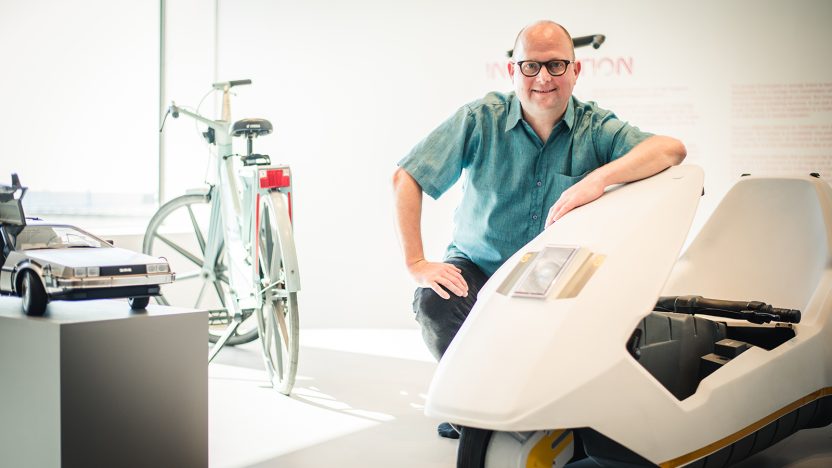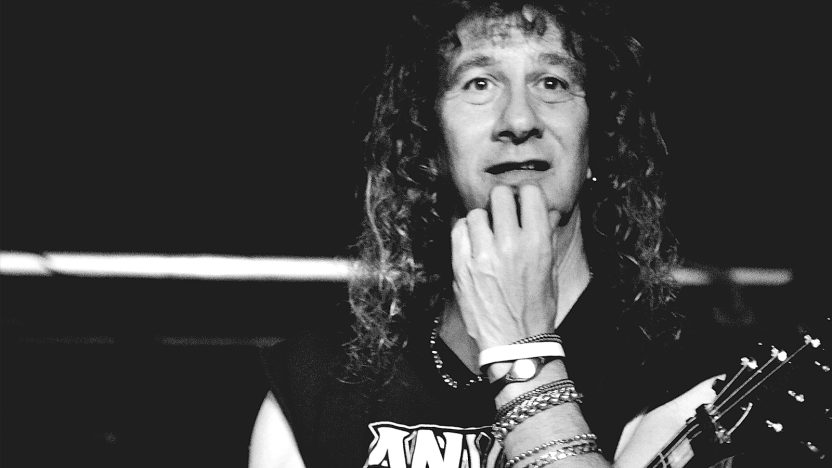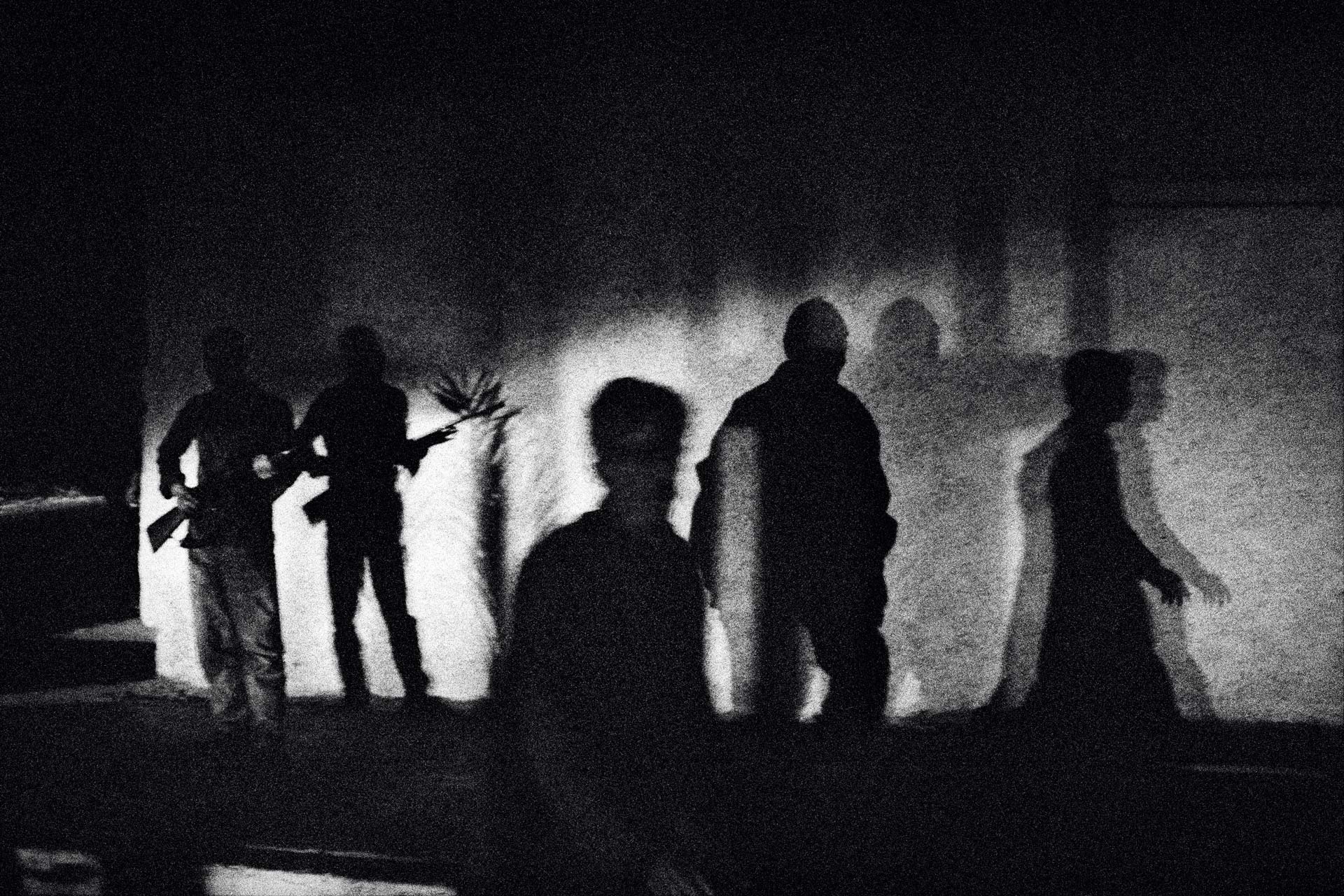
The eyes beyond the lens
Witnessing a war can be a horrific experience, but it can be soberingly teaching. For who is on the field, and for the lucky ones to relive those stories through their images
In conversation with Paolo Pellegrin by Matteo Scanni
Photo by Paolo Pellegrin. Armed civilians patrolling a village near Mascara at night, trying to protect it from radical Islamic groups. Orano region, Algeria. 2001
Fifty-seven years old, a dozen photojournalism awards, from the World Press Photo Contest to the Robert Capa Gold Medal, and a shelf of amazing books. Pellegrin started out in the early ’90s in the Vu group and then joined the Magnum Photos agency, the academy of world photojournalism that is so sparing with Italian photographers. After his baptism of fire in the Balkans, he went to Cambodia and on to the infernal round of the New Wars: Iraq, Palestine, Lebanon. Then Japan, after the tsunami, the Mediterranean with its migrants, and the black and invisible Africa. There are two masters at the heart of his work: Josef Koudelka, with his firm command of composition amid chaos, and Gilles Peress, with his courage to face the unspeakable and the incomprehensible. For him, photographs remain documents, “I feel like a cataloguer,” but no record comes out of reality on its own.
Let’s start from the beginning. What are identity and empathy in photography? Let’s try to give them some definitions.
They are a gradual approach and crossing process that stimulates reality, a broad and deep investigation in which detail and historical context are intimately related. Over the years, I think I have understood that there is a recognizable fragment of us in others even with all of the geographical, cultural, linguistic, and social distances. When you realize this, the distance vanishes. In a way, you understand that you are no longer photographing ‘the other’: photography becomes a tool to overcome differences and eliminate distances.
Perhaps this is what empathy is, understanding and embracing the idea that we are all connected, that we are all one, that you are in others and vice versa. In my thirty years of work, I have understood that when you recognize yourself in someone else, a glance is enough. The camera can be a filter or an obstacle, but also an opportunity or a spark.
There is so much debate about ethics, often without really knowing what we are talking about: ethics concerns people, not photography. There is a way of relating to the subject that is respectful and that I try to apply. Wherever I am, I always consider myself a guest, and, in return, I am almost always treated as a guest.
If I look back, I am extremely grateful for having found photography, which throughout my life has given me the means to express myself; it has given me a voice. But my gratitude is also towards all the people I have met through photography. It seems incredible, but even in the most remote and dangerous contexts I have almost always been treated well and been welcomed, even by people I didn’t know.
So often, I have stepped into the homes of strangers, been cared for and protected, and sometimes even rescued from danger. So many times, I have experienced firsthand the extraordinary and mysterious kindness of people who open their doors to you. It’s partly a matter of culture — in many countries, people have this sacredness and kindness related to guests and strangers. Partly the camera makes me a witness; people know that you are there to tell their story, whatever it may be, and they recognize a value in that. Simply having the camera around your neck lets you easily cross closed worlds, granting you incredible access. The camera becomes an extraordinary passport.

Photo by Paolo Pellegrin. Civilians arriving in Tiro after escaping from their villages in southern Lebanon during Israeli air raids. Tiro, Lebanon. 2006
What education did you get?
I started studying architecture, but I didn’t finish it — I only did three years. It was a great regret for my family when I quit, as I was the son of architects. I then attended the Istituto Superiore di Fotografia in Rome. Bear in mind that we’re talking about a pre-Internet era, where everything was more complicated. Even access to other photographers’ work was challenging. A small bookstore downtown called Il Ferro di Cavallo, was one of the few that had the beautiful and expensive books of the great international photographers. I would spend afternoons flipping through those books, studying those photographers.
At the time, I remember I thought of photography as a foreign language that I didn’t know and that I wanted to master. Therefore, for photography, the words, grammar, and syntax were the planes and the composition. From the beginning, I thought that, sure, you may have some talent, but talent is not enough; it is just one percent. The difference is the work, the skill, like that of a violin maker who makes a Stradivarius. I used to think of photography as a sort of specialized craftsmanship. Now all this has been wiped out with digital technology, the iPhone, algorithms… in the past, you had to be in control of the téchne; you had to know how a film reacted to light, how to expose it, how to develop it, understand the difference between daylight and tungsten…
Of course, we know that we learn the skills and then forget them, but at the time, I took it very seriously. And so, I set myself a period of eight, perhaps ten years, of intense and masochistic apprenticeship, as if I had begun in the Renaissance workshop of a painter. I assisted various photographers, made my own photographs, and printed them at night. Thanks to this work, which spanned many years, I reached a certain point — which happened to be during the war in Kosovo — where all this came together. And I became a photographer.
The Kosovo war was, therefore, your shadow line…
Yes, my experience in Kosovo was fundamental. I was already 34 years old, so I wasn’t very young anymore. I was making my second book, after Cambodia and a year before joining Magnum. I had already been shooting for ten years, but there in Kosovo, I felt fully like a photographer for the first time. I stayed there for a long time because I wanted to get to the bottom of that story; I put a lot of effort into it. It was kind of a point of no return for me. And it’s still an open story. Or better: on hold. There is no longer a war in Kosovo, but there is no peace either. I went back several times to photograph the slow return to everyday life in a place where there is an atmosphere of total alienation, of artificial normality that needs to be documented with the same intensity as during a war.
Does your work always revolve around news?
Around news, yes, but actually, I believe I am a photographer with long, drawn-out timescales. I am interested in photography that has a relationship with history, and that leads to my desire to make documents that can stand the test of time and become records, collective memory, and even culture. I am interested in the human and humanistic dimension of what I do; my research focuses on the story of people, and this undoubtedly requires an extended relationship with subjects and places. There are places to which I have returned many times: Kosovo, in fact, but also Gaza. For example, you can go to Ukraine to shoot pictures now, while tanks are entering the city, but you can also go there in a week or a month and collect other stories that arise from that event, from that news.
In recent years, the number and quality of local photographers have increased: Iraqis, Palestinians, Syrians. They know the terrain better, know how to move around perfectly thanks to the net, and sometimes are great photographers.
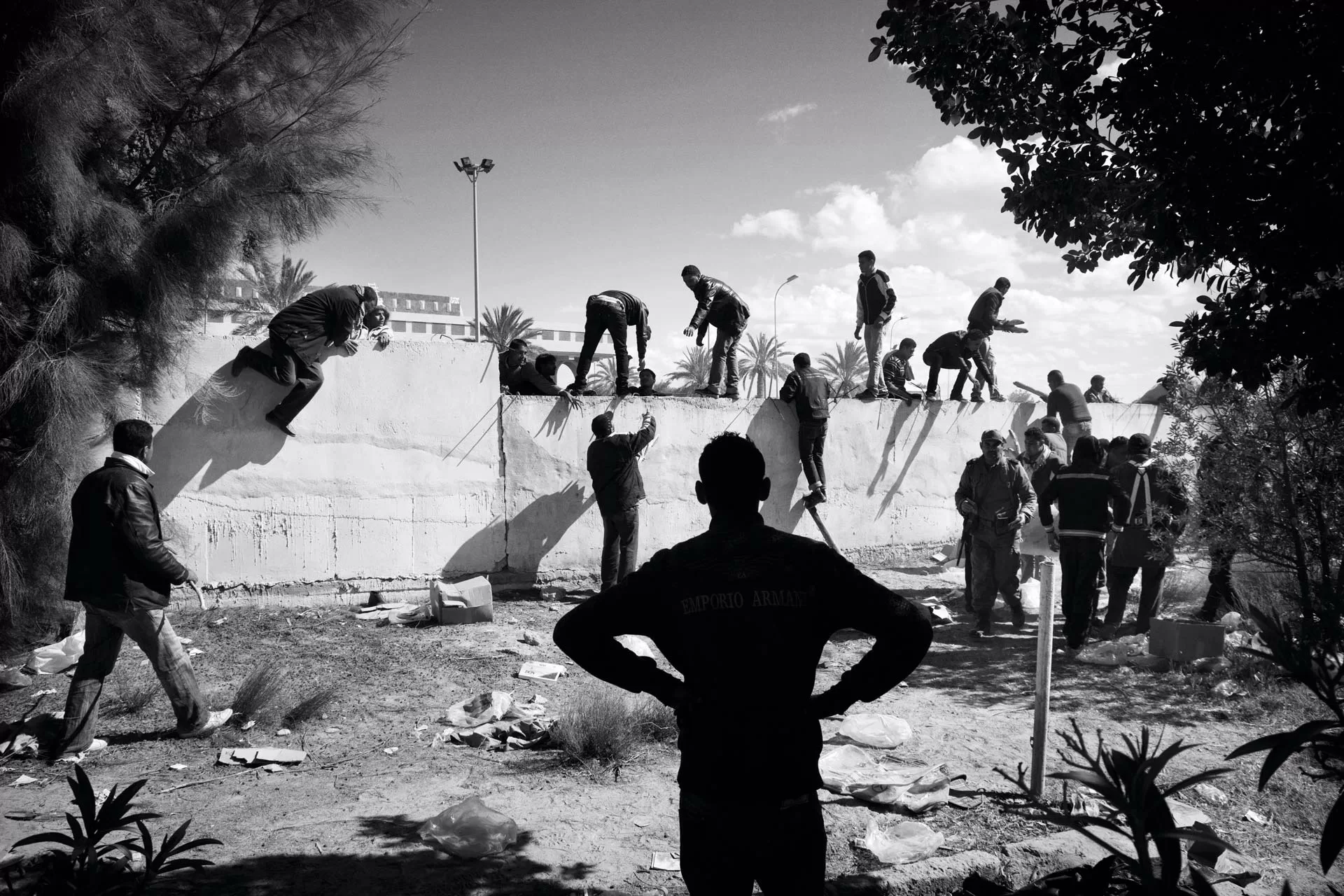
Photo by Paolo Pellegrin. Civilians running away from Lybia during the fights between rebels and pro-Gaddafi militias. Ras Jdir border crossing near Ben Gardane, Tunisia. 2011
Is there, perhaps, a problem with the neutrality of that information?
Maybe so, but on the other hand, there isn’t the cultural and linguistic gap that we experience coming from outside. And then, beyond the more or less fortunate relationships that photographers have with newspapers, I believe that the key to this profession now lies in in-depth study. The discriminating factor, as always, is quality.
But photographers are generally loners, aren’t they?
You start out on your own. When the U.S. invaded Iraq in 2003, I had rented a car in Kuwait City and filled it with food, water, spare tires, and spare batteries. After crossing the desert and reaching no man’s land, I hid in a farmhouse on the border. I thought I was alone, but instead, a carload of Italian journalists arrived. When they tried to enter Basra and were apprehended, I stayed behind to take pictures. In the end, you are alone because you have a personal, direct relationship with the story.
But you are alone not only in the physical, material sense: you are alone in trying to shape the world, in trying to grasp what is before you. This is a profoundly and intimately solitary exercise, every time this equation is being worked out within you. Then, as often happens, you work with a journalist, and you meet a lot of people… but when you take a picture — which is not just a matter of clicking, because that click contains the sum of who you are, your experience, your entire existence that becomes a vision — at that instant you are alone.
So it’s not to make sure you get the exclusive award-winning photograph all to yourself?
I always work on a set of pictures to build a story, a narration. I consider a body of images that becomes interesting when relationships are established between the photographs. Only then does my account become deep and meaningful. Having said that, I believe every single image can exist on its own. There is an initial authorship of the photographer because these images are imbued with the thoughts and intent with which they were taken. Then, however, they acquire a life of their own; they escape — as if they were children who grow up and leave — and therefore exist and wander the world with their load of thoughts and doubts. Images can have a multitude of lives: on the pages of a magazine, on the walls of a museum, on the web. In this roaming, something happens that interests me a lot: these images carry their load of open questions that are closed each time by the reader’s gaze. Photographs are open documents, closed by the other’s gaze. Photography is not just the photographer’s job: it is the viewer who ends up giving meaning to the photographs I take. For me, this is the wonderful concept of photography that becomes active, alive, the spark of a conversation, an open dialogue with the world.
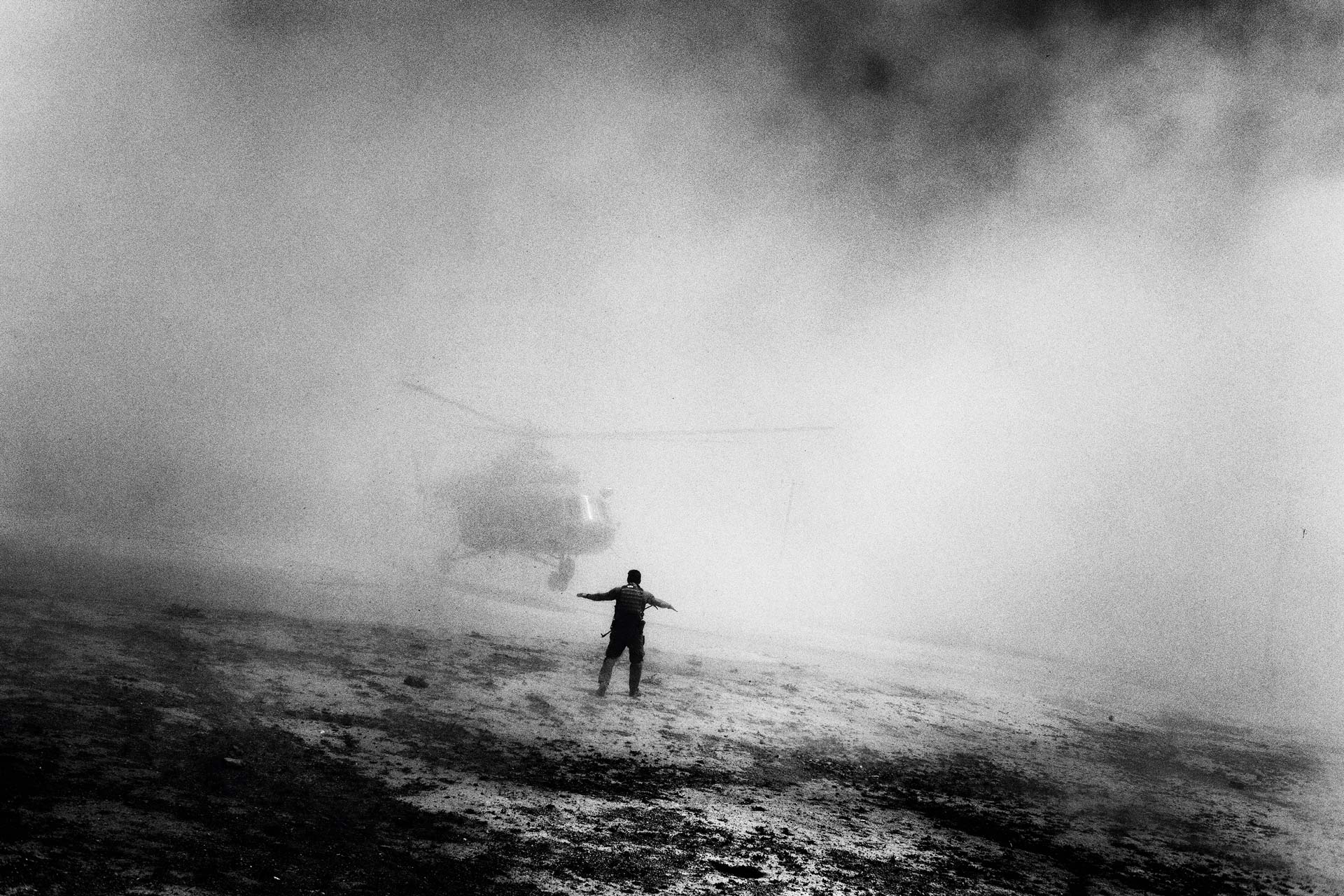
Photo by Paolo Pellegrin. A helicopter used by Afghan and American drug squads. Afghanistan. 2006
Is a good photographer always a war photographer?
I wasn’t born with the idea of being a war photographer, but I do have the idea of the photographer as a witness, as a correspondent on behalf of a community. I am moved by the idea of having a purpose, a role, and a usefulness. And so, I have often found myself in extreme situations, in a territory where you come up against the best and the worst of mankind: the spirit of resistance, survival, courage. And pain above all. These stimuli lead me to wonder about my work’s ethical and moral aspects, about the necessity and limits of the right/duty to bear witness.
Standing before other people’s pain is never easy; you never get used to it. Quite the contrary, you become increasingly sensitive. There is a constant and unresolved conflict between the duty of reporting and telling a story and the fact that a person is suffering in front of you. There is no equation; there are no automatisms. Every time you try to figure out the right thing to do, every time you put everything into play and adapt your behavior.
In a chaotic period characterized by hectic times, photography has the power to freeze the moment, creating a pause and a time for reflection. A beautiful photograph is an instant stolen from the flow of things; it has its own intrinsic necessity; it demands an interpretation, a stance. In this sense, photography continues to have the potential to disrupt public discourse, and I say this not only as a photographer but also as a reader and a citizen. That doesn’t mean it can change the world — perhaps it’s too much to ask photography to change the world! — but there are occasions when photographs can shift public opinion. I recall the role of photographs in the Vietnam War or, more recently, individual photographs — for example, the photographs taken in the Abu Ghraib prison — that burst forth and have this extraordinary impact and become possible agents of change.
Looking at your shots, one sometimes gets the impression that you are almost forced by an inner urge to set out on a journey to pursue a story that you have in your head, that there is almost a “compulsion” to record it…
Photojournalism is an important and essential presence; reporters with their work send signals, and sometimes these signals, these accounts, come into contact with people. Photography is interesting because it is the direct and instantaneous translation of who the photographer is in that moment. Every time we shoot, we give a voice to a thought, an opinion… we convey who we are in that moment. The work of photographers presents the set of questions they have asked themselves in the face of war and suffering and then leaves room for everyone to ponder.
As I’ve said before, I’m interested in open photography, where I’m in the midst of what I see. I ask myself questions, and every answer shifts the perspective to other questions. A photograph is a seed: if it changes something, it does so slowly, growing inside whoever observes it because no photograph really exists if it is not an encounter that challenges a conscience. Once again: I believe that the authorship is only initial; as a photographer, I consider myself the spark of gestures that have created images that then have a life of their own and belong to me only in part.
What was the encounter that made your career?
Kathy Ryan, longtime photo editor of The New York Times Magazine. She believed in me and assigned me a story in Albania, paired with war correspondent Scott Anderson. That was 1997, and it was my first story. The team formed with Scott lasted 20 years. Kathy pushed me to explore other areas of photography as well: sports, with images of potential Olympic gold medal-winning athletes. To represent them, I was inspired by photographs from the ‘30s, focusing on their silhouettes. Then she asked me to photograph actors. I didn’t feel right for that assignment, but she has the genius of someone who sees something in you that you don’t yet know about.
For someone who is used to shooting in extreme situations, what is it like to find yourself photographing, for example, Penelope Cruz?
I don’t really worship celebrities, except maybe Stanley Kubrick and Tarkovsky, but I’ve found that actors can be interesting and socially engaged people, like Brad Pitt and Sean Penn. I tried to catch them in the less obvious, less formal moments. In portraiture, I am interested in a psychological aspect, so the effort was to try to go beyond their public mask, and reveal something of their interiority. Whether famous or not, my effort is always to try to feel and touch something beneath the surface. Of course, you can reach it in different ways because the contexts are different. However, in front of the camera, I try to treat everyone the same: with respect and consideration.

Photo by Paolo Pellegrin. Refugees of Albanian descent fleeing Kosovo. Kukës, Albania. 1999
Have you ever found yourself putting your camera aside? Choosing not to shoot…
I have a whole mental gallery of photographs that I didn’t take out of shame or fear, and there are also photographs that I regret having taken. Then there have been situations where I felt like photography could not fully capture what was before me. For example, when we arrived after the earthquake and tsunami in Japan, there was total silence and no human beings. The scale of the destruction was beyond human, beyond the scale of war, beyond my comprehension, to the point that photography could not handle the magnitude of what had happened. In the end, to represent the magnitude, I decided to make a composite work, a sort of Guernica of images that, as a whole, tried to represent this enormous scale… the single photographs in sequence were not enough.
I have set my camera aside a few times. For example, in Lebanon, in 2006: we went into a village that had been bombed by the Israelis, it looked deserted, but in a basement, we found a group of elderly people who had been hiding for days, too old to move on their own and reach a less dangerous area while waiting for help. Without thinking twice, we carried them on our shoulders. In fact, I don’t even have a single picture of that village, of those people.
Are you ever amazed by how the subject reveals itself to you? Are there exceptional moments when you shoot, and you get a rush? In other words, are there factors that drive these, shall we say, “sublime” moments? Herzog calls all of this ecstatic truth: when you can’t explain something, but you know you’ve understood it.
What I can say is that I have often found myself in that sacred dimension, in that fragile and mysterious terrain surrounding death. Where you realize that you are facing something bigger than yourself. You can give it a mystical sense, a religious sense, or an existential sense. And in that space, in that situation, there is a chance of an encounter with someone else in a way that goes beyond words, beyond language and cultural differences. In those moments, I feel that I am in front of something that I cannot see or grasp completely. But it is standing in front of me, looking at me. For me, a trace of this unique experience can be found in such a universal and deeply intimate exchange. Faced with someone else’s death, we feel that it is a loss that involves us, challenges us, and belongs to us.
Do you know what you’re going to do after being a photographer?
I don’t know if there will be an after! As I was saying, I feel grateful and privileged to have found photography, which is my voice, my way of expressing myself. I feel like being a photographer forever, I don’t think I want to do anything else. I believe that my way of photographing has changed over time, as I have changed, and my photographs are becoming sparser.
Perhaps the thought that has changed me over the last ten years is becoming a father. When Luna Grace was born, my perception of danger changed. My sense of duty continues to push me to go where the world is boiling, but nowadays, I’m held back by the idea of putting myself at great risk. Things have changed in me. It’s not just me; today, my sense of responsibility goes beyond me; it includes my daughters and my partner.
